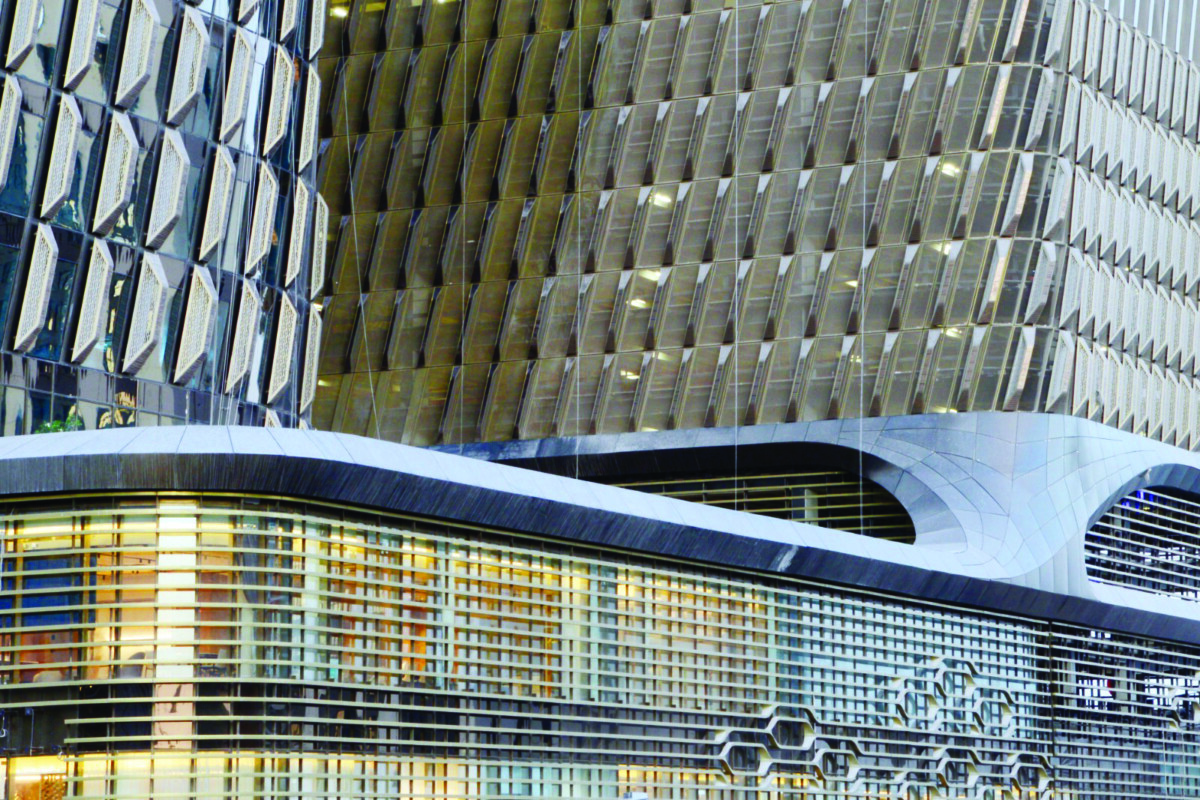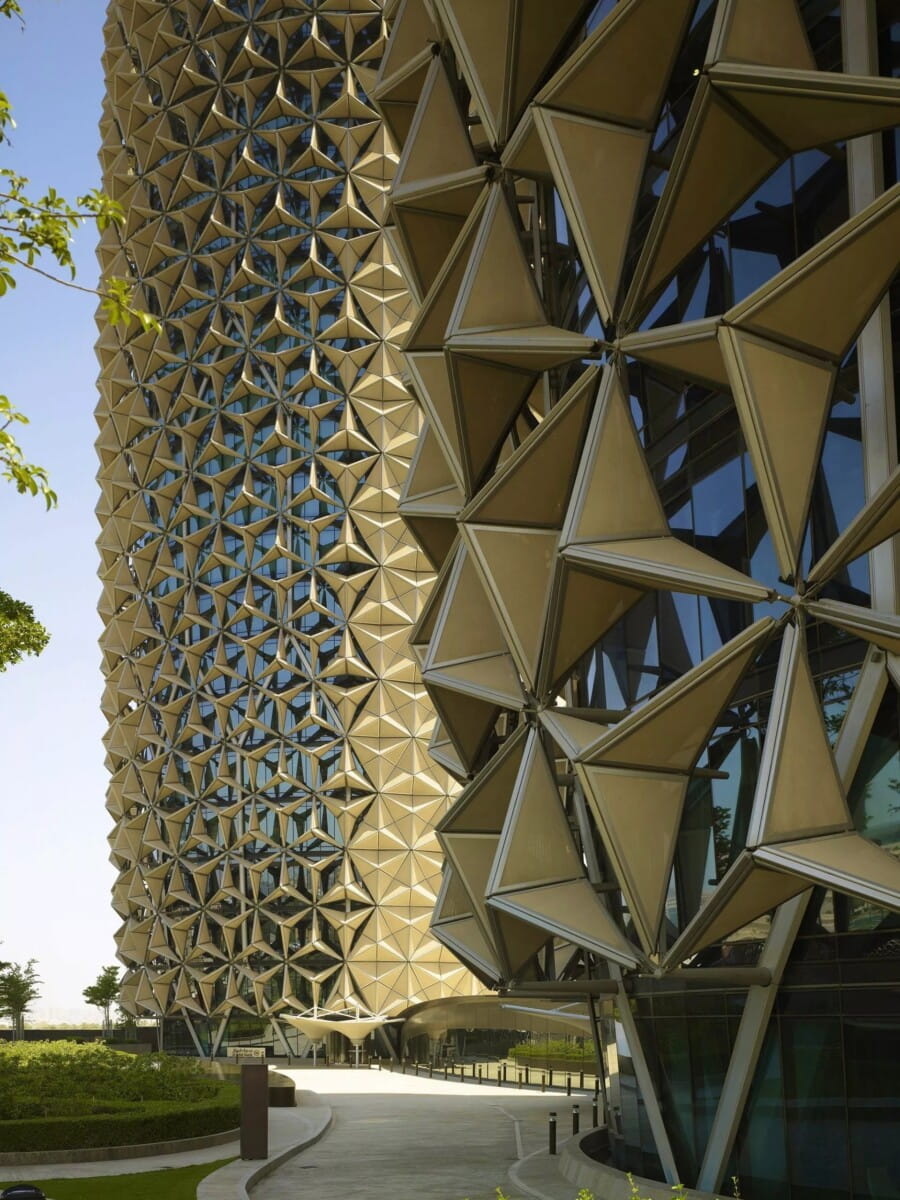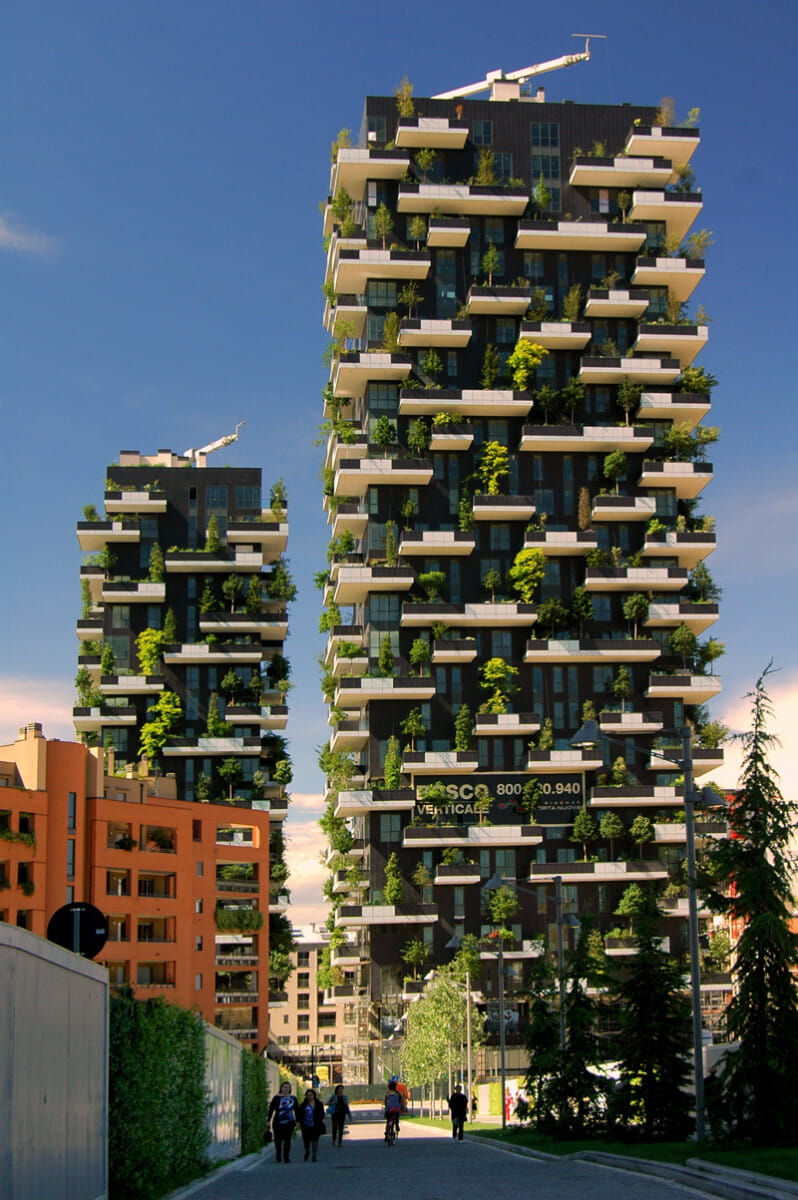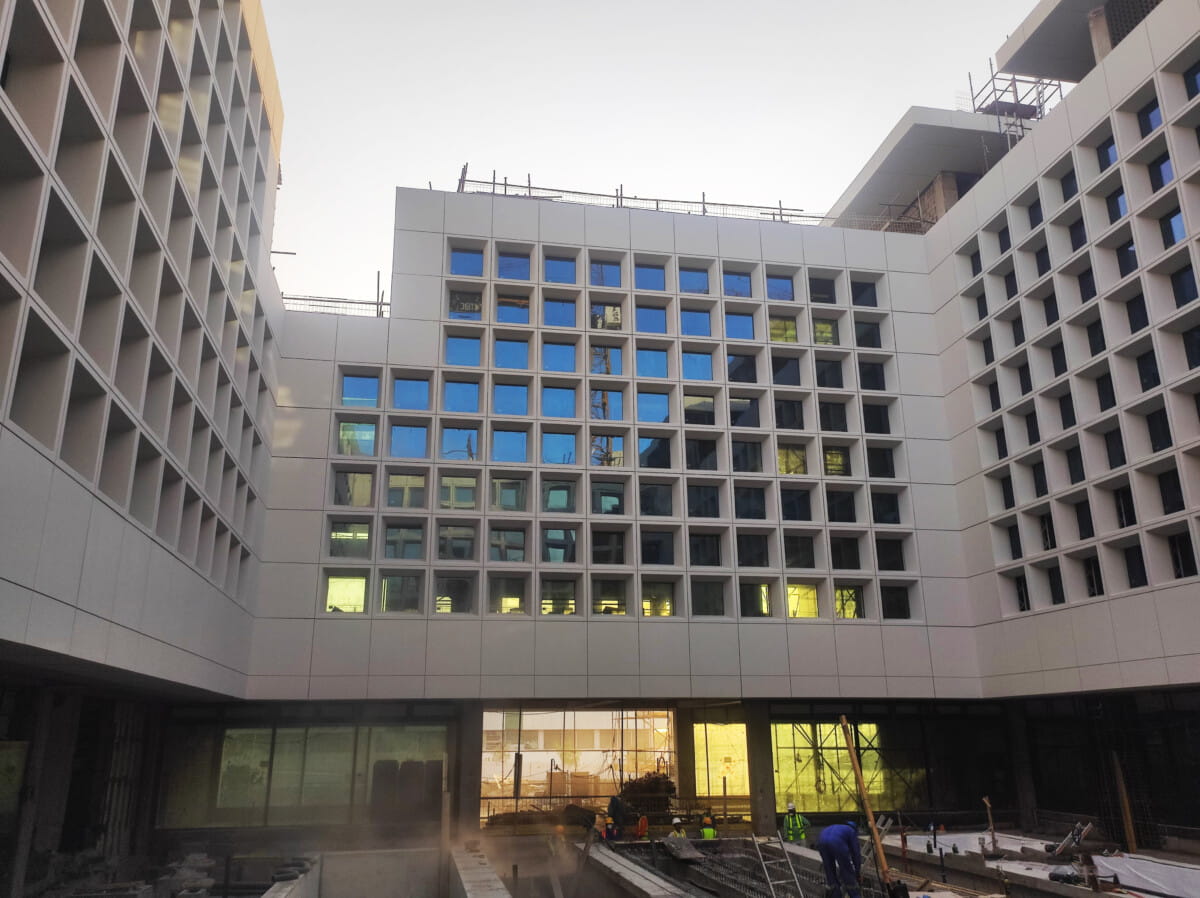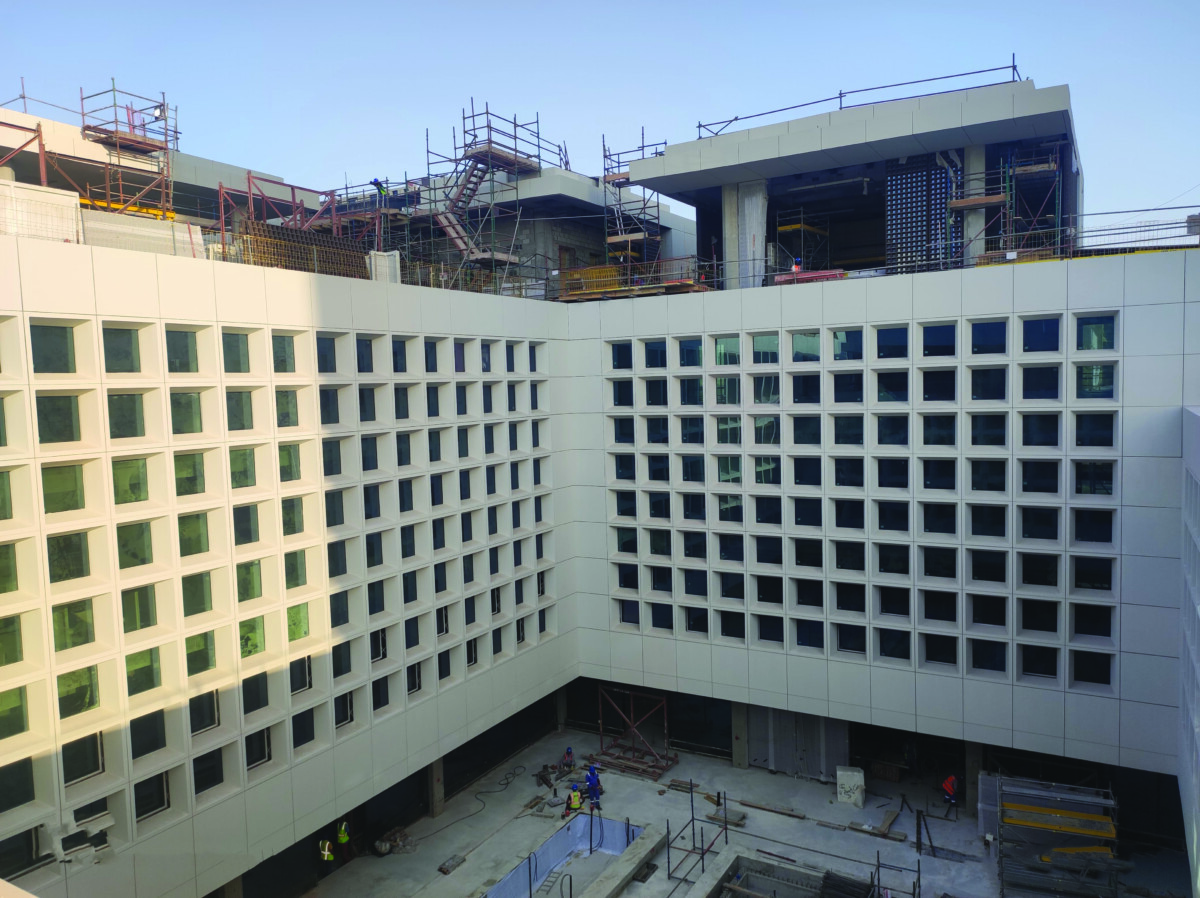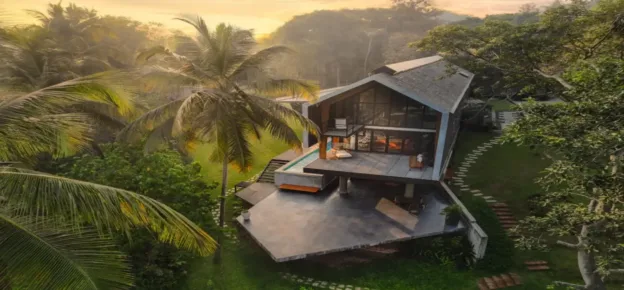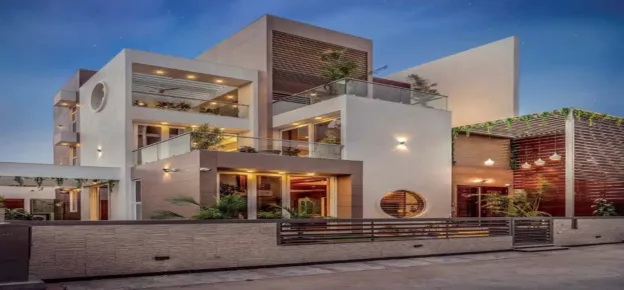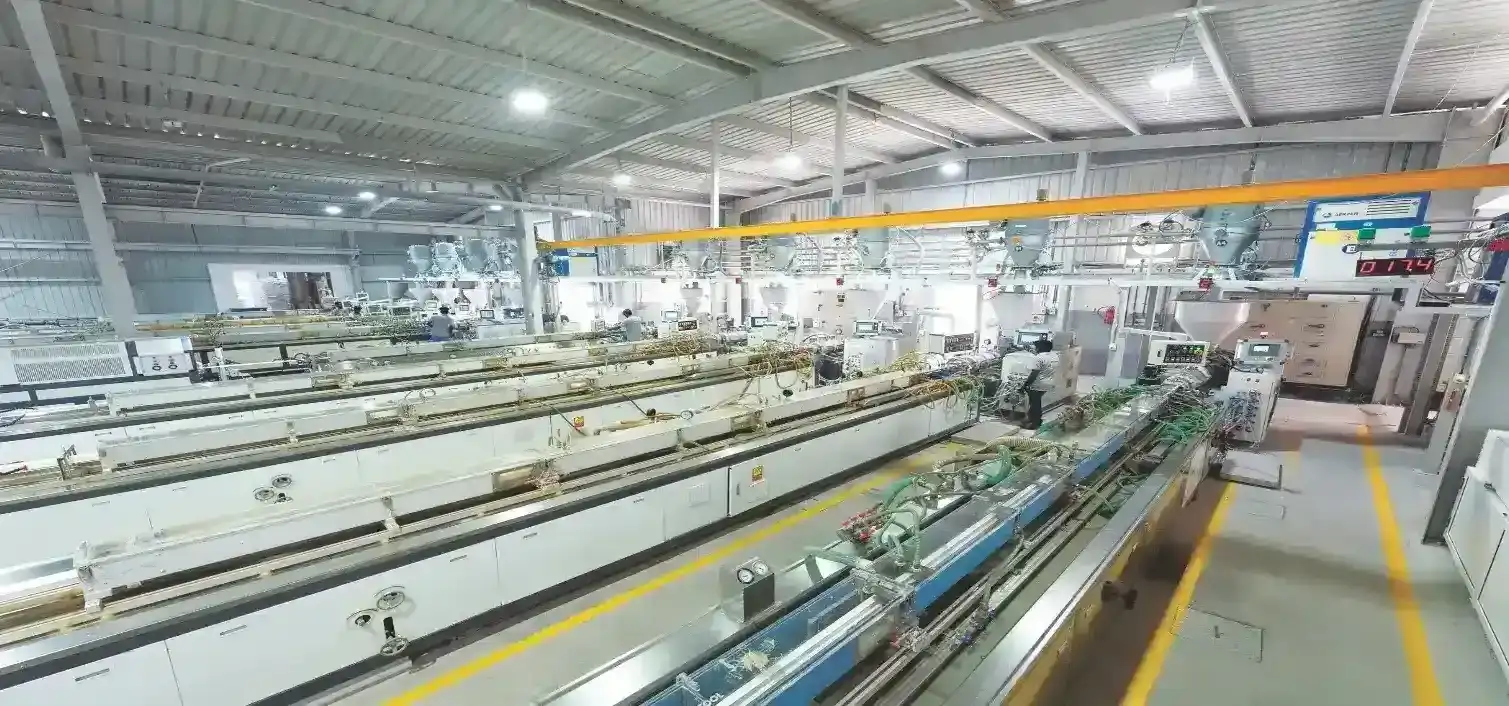Facades Reimagined: The Convergence Of Technology And Sustainability In Modern Architecture
Modern façades are evolving into dynamic, multi-functional systems that blend cutting-edge technology with sustainability. IoT sensors embedded in façades enable real-time monitoring of energy use, air quality, and structural integrity, optimising building performance and occupant comfort. Meanwhile, advancements in glazing, such as complex curved glass, and lightweight materials like carbon fibre composites empower architects to push design boundaries with bold, intricate forms.
Digital tools such as BIM and parametric design streamline precision and collaboration, while Lusail Tower—UHPC Panels, Doha, Qatar—prefabrication reduces waste and accelerates construction. Biophilic principles further elevate façades through the use of organic materials (wood, stone) and living walls that merge urban structures with nature, enhancing biodiversity and mitigating urban heat islands. As cities expand, these innovations are redefining façades as active contributors to resilient, sustainable, and human-centric urban landscapes, where technology and ecology coexist to shape the future of architecture.

Double-Skin Façades
These dynamic systems create a thermal buffer zone between exterior and interior layers, reducing HVAC loads and enhancing occupant comfort in extreme climates.
The Wasl Tower will feature one of the world’s tallest ceramic façades and will serve as a regional benchmark for adaptability and sustainability. Designed by Hopkins Architects, it stands as a symbol of Dubai’s commitment to sustainability and futuristic urban design.
The Wasl Tower in Dubai is distinguished by its terracotta tile cladding, arranged in a fish-scale pattern that creates a dynamic, textured appearance. Terracotta, a natural clay material, offers excellent thermal insulation, durability, and sustainability, making it ideal for Dubai’s climate. The tiles’ warm, earthy tones harmonise with the desert landscape while providing a unique visual identity. Installed using a ventilated façade system, the cladding improves energy efficiency and withstands environmental stresses. The design merges traditional craftsmanship with modern technology, symbolising Dubai’s blend of heritage and innovation, and establishing the Wasl Tower as a standout architectural landmark on Sheikh Zayed Road.
Biophilic Design And Green Façades
Biophilic design integrates natural elements into building exteriors to enhance well-being and sustainability. Green façades, featuring living walls or vertical gardens, are a prime example. These systems improve air quality, provide insulation, and support biodiversity.
Milan’s Bosco Verticale (Vertical Forest) towers are a pioneering example of biophilic architecture. These twin residential towers, standing 80 and 112 meters tall, are cloaked in over 900 trees, 5,000 shrubs, and 20,000 plants, transforming concrete structures into thriving vertical forests. Bosco Verticale redefines skyscrapers as “living organisms,” demonstrating that urban architecture can actively combat climate change while enhancing both human and ecological health. Its success lies in merging bold design with rigorous science—a model for the cities of tomorrow. Let me know if you would like deeper insights into its engineering or plant selection!
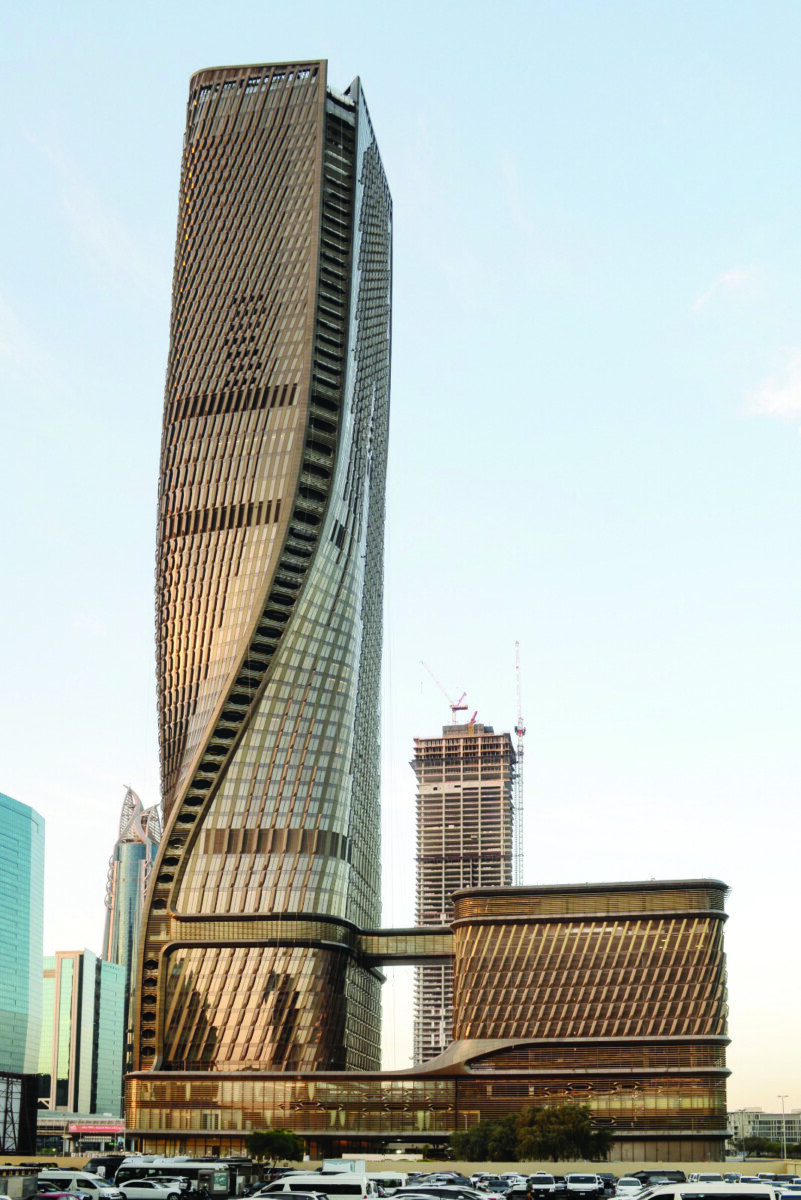
Parametric And Kinetic Façades
Imagine a building that breathes, adapts, and even dances with the sunlight. That is the magic of parametric and kinetic façades—architectural marvels that blur the line between static structures and living, responsive ecosystems. Let’s peel back the layers of these futuristic designs and explore how they’re reshaping our cities, one dynamic panel at a time.
Kinetic façades take the concept of “smart homes” to a whole new level. Picture a building that shifts its skin like a chameleon—louvers that pivot to follow the sun, panels that ripple in the wind, or a canopy that unfurls to shield a plaza from rain.
This iconic duo reimagines traditional Islamic mashrabiya screens with over 1,000 sun-responsive panels that open and close like origami, reducing solar heat gain by 50% in Abu Dhabi’s desert climate. Designed by Aedas Architects, the fibreglass composite triangles track sunlight via sensors, balancing shade and views while honouring cultural heritage.
Inspired by the natural movement of pinecones (biomimicry), the façade combines parametric precision with energy efficiency, demonstrating that sustainability can be intelligent, poetic, and rooted in tradition.
Minimalist And Monolithic Façades
Minimalist and monolithic façades embody the essence of simplicity and strength in architecture. Minimalist designs focus on clean lines, neutral tones, and smooth surfaces, creating a sense of calm and order through restrained aesthetics. Monolithic façades take this further, using a single material such as concrete or stone to craft bold, seamless structures that appear sculptural and timeless. Together, these styles prioritise functionality, elegance, and a harmonious connection to their surroundings, making them enduring favourites in modern design.
Innovations In Cladding Materials
Innovations in cladding materials are transforming façades with ultra-high-performance concrete (UHPC) for strength, photovoltaic glass for energy generation, and self-cleaning coatings for low maintenance. Recycled and bio-based materials such as hemp composites reduce carbon footprints, while b-foil and kinetic panels enable lightweight, adaptive designs. These advancements merge sustainability, functionality, and aesthetics, reshaping contemporary architecture.
The UHPC (Ultra-High-Performance Concrete) panels used in the Lusail Tower Podium in Qatar are a key feature of this iconic development. UHPC is an advanced material known for its exceptional strength (over 150 MPa), durability, and resistance to harsh environmental conditions such as high temperatures and sandstorms. In the Lusail Tower Podium, these panels are employed for both structural and aesthetic purposes, offering a lightweight yet robust solution for the façade or cladding system.
The panels enable sleek, modern designs with intricate patterns and textures, enhancing the tower’s visual appeal. Their high strength-to-weight ratio allows for thinner, lighter panels, reducing the overall load on the structure. Additionally, UHPC is a sustainable choice, requiring less maintenance and offering a longer lifespan compared to traditional materials.
Conclusion
The façade industry stands at the forefront of a paradigm shift, driven by an unwavering commitment to sustainability, technological advancement, and design innovation. Emerging trends – such as biophilic façades, kinetic systems, photovoltaic cladding, and circular material solutions—are redefining the role of building exteriors.
The author’s involvement in landmark projects such as Lusail Plaza Tower (Qatar), Wasl Tower (Dubai), and the ongoing Aramco Stadium Project in Dammam has reinforced the critical importance of cross-disciplinary collaboration, cutting-edge technology, and sustainable practices in façade engineering. These projects exemplify how innovation can harmonise cultural identity, environmental responsibility, and architectural excellence.
As urbanisation and climate challenges intensify, the façade industry will continue to evolve, shaping skylines with structures that are not only visually iconic but also resilient, adaptive, and future-proof. By embracing these principles, we are not merely designing buildings – we are crafting legacies that balance human ambition with planetary stewardship



